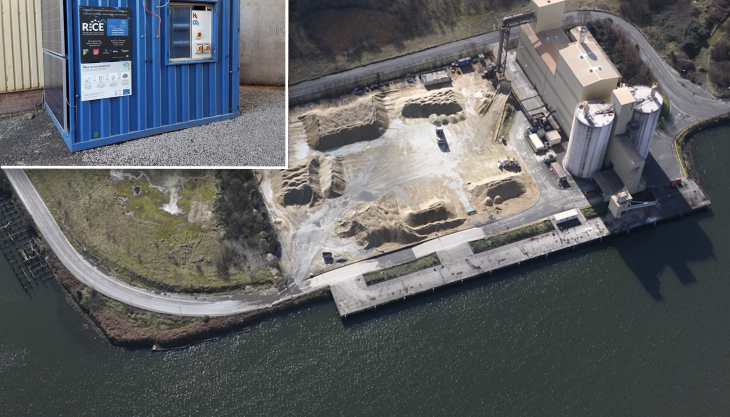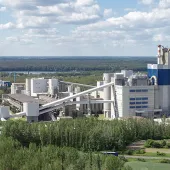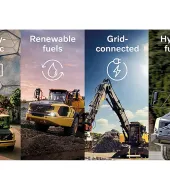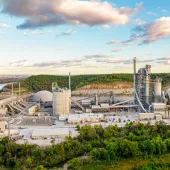
New hydrogen demonstration unit installed at company’s Regen GGBS plant in Port Talbot
HANSON UK are collaborating with researchers at the Energy Safety Research Institute at Swansea University, to look at innovative technologies to reduce industrial carbon emissions.
A new hydrogen demonstration unit, which generates green hydrogen through renewable energy, has been developed and installed at the company’s Regen GGBS (ground granulated blast-furnace slag) plant in Port Talbot, south Wales (main photo), as part of the £9.2 million ERDF-funded RICE project.
The aim of the demonstration unit (inset photo) is to replace some of the natural gas used to power the plant with green hydrogen, which is considered a clean source of energy as it only emits water when burned, reducing CO2 emissions.
Cement production is energy intensive due to the high temperatures required to produce clinker – the main component of Portland cement. Hanson’s Port Talbot plant produces Regen GGBS, which is used as a replacement for up to 80% of the cement in concrete. Although Regen is also an energy-intensive product, using large amounts of natural gas and electricity, its carbon footprint is about one-tenth of Portland cement.
The unit produces hydrogen through the process of electrolysis, where renewable energy is generated through wind and solar on site and directed into the electrolyser or water-splitting device. The electrolyser can efficiently use this energy to split water into hydrogen and oxygen, and the hydrogen is then passed into the burner to enrich the combustion mixture, saving carbon emissions from the burning of natural gas.
‘It is estimated that cement is the source of just under 1.5% of UK CO2 emissions,’ said Marian Garfield, head of sustainability at Hanson UK. ‘With demand for cement and cement replacement products predicted to increase by a quarter by 2030, researchers and industry are working hard to reduce the level of carbon emissions associated with production.
‘As a leading manufacturer, we take our responsibility very seriously. In the UK we have already achieved a 30% reduction in CO2 emissions since 1990 across the business and have set an ambitious new target of a 50% reduction by 2030 from the same baseline. We are constantly looking to improve energy efficiency and carbon reduction at our cement and Regen plants, so we are delighted to be involved with this innovative research project.’
Dr Charlie Dunnill, who is leading the team based at the Energy Safety Research Institute, added: ‘It has been a pleasure to work with the staff at Hanson and is amazing to see technology from our labs interacting in real time with local industry, actually producing hydrogen that can be burned in exchange for natural gas to lower their greenhouse emissions.’
Professor Andrew Barron, principal investigator of the RICE project, summarized the achievement: ‘As we head towards the UK’s 2050 goal of net zero, it is important to give industry scalable pathways to reach that end. The RICE project is all about doing this, since there is no longer time for more research projects, it is time for action’.









